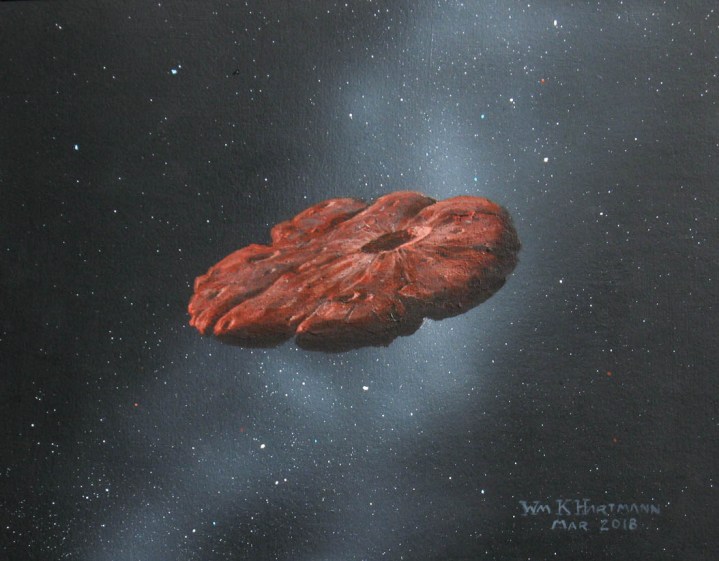
In late 2017, a strange cigar-shaped object was spotted streaming across the sky and was subsequently identified as coming from outside our solar system. Named `Oumuamua, this object didn’t seem to fit with what we know about comets, and researchers rushed to study the unique find and uncover its mysteries.
Now, researchers from Arizona State University have brought together observations of the object and worked out what combination of ices would explain its mass and shape. They found that solid nitrogen ice, like that found on the surface of Pluto, would explain the object’s features. They also calculated how quickly chunks of solid nitrogen could be knocked off the surface of a body like Pluto and found it was likely that a chunk from another solar system could reach our own.
The researchers are now confident they can explain what the object was made of. “This research is exciting in that we’ve probably resolved the mystery of what ‘Oumuamua is and we can reasonably identify it as a chunk of an ‘exo-Pluto,’ a Pluto-like planet in another solar system,” the study’s author, Steven Desch, said in a statement. “Until now, we’ve had no way to know if other solar systems have Pluto-like planets, but now we have seen a chunk of one pass by Earth.”
This composition of solid nitrogen explains the object’s elongated shape as well, according to co-author Alan Jackson. “It was likely knocked off the surface by an impact about half a billion years ago and thrown out of its parent system,” Jackson said. “Being made of frozen nitrogen also explains the unusual shape of ‘Oumuamua. As the outer layers of nitrogen ice evaporated, the shape of the body would have become progressively more flattened, just like a bar of soap does as the outer layers get rubbed off through use.”
Although at the time, the object’s strange features made some people suggest it could be evidence of intelligent life, the researchers don’t think that’s likely.
“Everybody is interested in aliens, and it was inevitable that this first object outside the solar system would make people think of aliens,” Desch said. “But it’s important in science not to jump to conclusions. It took two or three years to figure out a natural explanation — a chunk of nitrogen ice — that matches everything we know about ‘Oumuamua. That’s not that long in science, and far too soon to say we had exhausted all natural explanations.”



